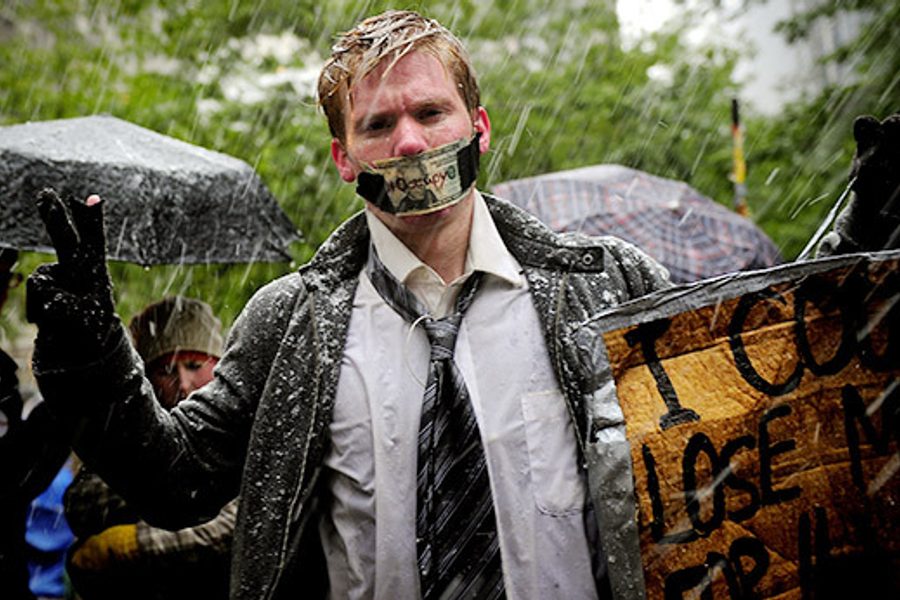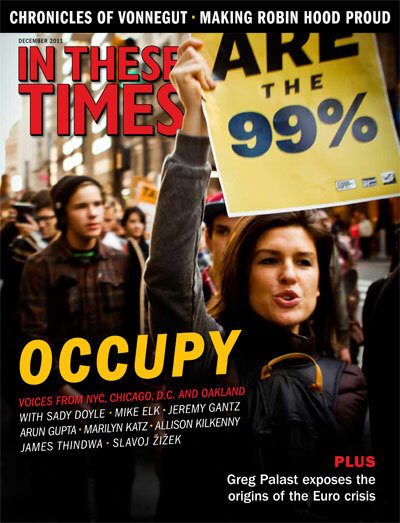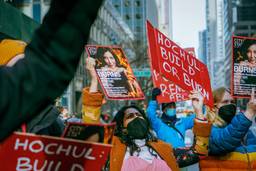Lessons from the 1960s for the 99 Percent
To build a truly mass movement, Occupy protesters must avoid militancy—and learn to like leaders.
Marilyn Katz

The Occupy phenomenon has radically changed the conversation. But while Occupy Wall Street has inspired Occupiers in cities throughout the country – and the world – this is not yet a mass movement. Whether it becomes one depends on several factors – some within the Occupiers’ control, some not.
This political awakening resembles the beginnings of movements of the early 1960s – when amid a self-satisfied expanding economy people emerged to challenge the racial segregation, the sexism and a bellicose foreign policy that flew in the face of their ideal of America as the world’s great democratic hope. Our demands for racial and gender equality, and an end to war in Vietnam were met with opposition and scorn by those in power. Yet we felt they were part of a larger, worldwide movement toward democracy, one that stretched from Vietnam to Guinea-Bissau, from Paris to Mexico City, from Haight-Ashbury to Selma.
In important ways, however, the Occupy movement does not. Though the Occupiers are beginning (it appears) with a more fundamental critique of “the system” (a critique that ’60s activists themselves took a while to understand), and while the Occupiers are similarly propelled by the disparity between promise and reality, they must contend with both an economy that is contracting and the lack of inspirational role models for transformative change. On top of this, they are burdened by a challenge of their own making – a disdain for and distrust of leadership.
The ability of the protesters to go from exemplary action to mass movement will depend on their ability to meet four challenges. First, they must develop and embrace emerging leadership among themselves. Second, they must expand beyond their current focus on the demand for public space, and re-focus on the inequities that inspired them and the nation.. Third, they must create a platform and set of actions that reflect the concerns and aspirations of the millions who applaud the occupations, but have not yet found ways to connect their nascent solidarity to the movement in a way that fits into their day-to-day lives. Fourth, they must, in concert with their allies, forge a viable multi-pronged strategy that goes beyond protest alone.
The protesters have found themselves in the midst of and leading an almost-mass movement that nobody expected – least of all them. And while it is unfair to demand that such a young movement have a well-formed vision and long-term strategy, if it is to last beyond the winter and grow beyond its current size, both must emerge.
The leadership – whether or not they call themselves leaders – must continue to reach out to neighborhoods, labor unions and other allies, and they must ultimately get the buy-in from many thousands of people. But they are novices, not experienced organizers. It’s going to take some time.
We might be in the position the world was a 100 years ago, when people were longing for change and groping their way toward democracy without yet knowing what it would look like.
Over time, the Occupy demonstrations will need to develop a structure that tries to figure out what it is, whether that becomes a third political party or a set of demands. The issues are many, and thorny. Where to go tomorrow? How to stay encamped over a long winter? And how will local movements relate to the global movement?
This is where identifiable and embraced leadership will be crucial. The General Assemblies are wonderful examples of direct democracy and are great ways to determine the actions of the day or how to divide responsibilities for maintaining a site. They are not, however, sufficient, nor particularly democratic modes for a movement that needs to expand to the millions if it is to succeed. While leadership certainly can be abused or abusive, manipulative or susceptible to corruption or co-optation, there is no question that leaders like Sojourner Truth, Emma Goldman, Mother Jones, Ghandi and Martin Luther King, crystallized issues for and gave voice to the movements from which they emerged, so that those movements could become the province of the millions, not the few.
The Occupy movement needs leaders to help it move forward and make decisions about how to grow and gain allies and how to be, ultimately, strategic in its thinking. As the movement gets broader, as people travel from site to site, and discuss, compare and contrast, specific demands will emerge.
The challenge for the Occupy movement leadership will be to make its allies welcome and ensure that the message and focus of the movement appeals to them and addresses their needs.
That underscores the danger within the Occupy movement of narrowing its emphasis to one that focuses on battling police for the right to public space. As protesters continue to suffer arrests, the police will become the issue. And while most Americans will agree with the fundamental demands, they will be divided over the stance that they are willing – and able – to take toward law enforcement. By putting so much focus on this issue so early on in the movements’ development, demonstrators risk losing their base before it has been built.
Reality check
The movements of the ’60s took place in a time of hope – from nations emerging from centuries of colonialism to the optimism of expanding post-WWII economies. And while in the intervening decades disparities between the rich and the rest of us have increased, we must also acknowledge that during those years, American society accommodated the aspirations of a vast majority of the demonstrators and the issues they represented. The draft and war were ended. Jobs and educational opportunities began to open up for African Americans. Abortion was made legal.
Today, the realities are different. America’s economy remains the world’s largest, but the wealth it creates does not benefit the 99%. Consequently, the Occupy movement is about both fulfilling the promise of democracy – a promise that is being subverted by the power of money – and about fundamental economic issues.
Young people are agitating not only for work, but for meaningful work. Today, highly educated young people cannot find a place within the system. What are their prospects? Seasonal work in a Halloween pop-up store?
They are driven not only by economic deprivation, but also by the demand to be able to meaningfully contribute to society. That is a new American problem.
In the ’60s, we knew that even if we chose to drop out, we could always drop back in.
The question is – not for simply the occupiers themselves, but for the macro economic forces that propel them – can the United States of today address the issues that propel the demonstrators and underlie the sympathy they have found? Can the nation generate 10 million jobs? Is the economy expansive enough to absorb highly skilled, productive labor, particularly in a moment when the rise in productivity of individual workers and the move toward technology have lessened the amount of labor needed to produce wealth?
This is partly, of course, a question of political and social will. If past history is the judge however, unjust societies are rarely willing to self-reform. And while we may not be more divided as a society than we were 10 years ago, the divisions that we have are starker. We may be approaching a kind of “Weimar moment” where the fundamental structures of the society are failing, the xenophobic right is attacking liberalism and the petit bourgeoisie is terrified – both of economic decline and what they see as the decline in social mores.
No outcome – left, right or middle – is guaranteed. The situation is volatile. Many people, including those on the street, are cynical about the ability of our political system to remedy fundamental structural issues. The potential of the Occupy movements – and their challenge – is to create something productive from this discord.
The Occupy demonstrations are a powerful social force with real potential. But the core organizers must ensure that they are always expanding the movement – rather than (as happened in the ’60s) spiraling toward greater and greater militancy with a smaller and smaller number of people.
The number of people who are actually there in Occupy Chicago or Occupy Wall Street represent the sentiments of literally millions more, many of whom are not comfortable participating – yet.









